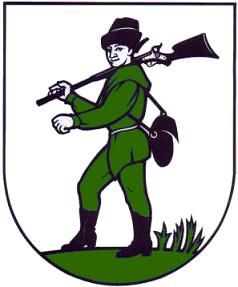Introduction
In the north part of Low Beskydy mountains, below the main Carpathian ridge and 14 kilometres to the north-east of Svidnik town lies village Vyšná Pisaná. This border village, situated next to borders with Poland, is the last and northernmost settlement in the upper part of Kapišovka river valley.
Older history
Vyšná Pisaná ranks among the youngest villages of Makovica estate. It was founded in the second half of the 16th century in its forest-rich north-eastern corner, during the last wave of settlement.
The earliest mention of Vyšná Pisaná can be found in a tax register Regestrum domorum et taxarum nobilium et rectificationum comitatus Saaros from 1600 ( MOL E158, A2655, s.328 ). The register differs from most of the older and newer ones in that it includes a number of taxed houses.
World War I
Onset of 20th century brought about more suffering to local inhabitants, as they were not spared the destruction caused by WWI. Following the mobilization, all able men under 50 were conscripted to Army. That fact alone caused much suffering, as farms were thus deprived of much of available workforce.
Life in the first Czechoslovak Republic
Formation of the Czechoslovak Republic after WWI was greeted with joy and belief in better future by both local inhabitants and the region as a whole. Although the population had traditionally been of Ruthenian nationality, in 1919 as much as 69 out of 115 citizens chose Czechoslovakian nationality over the Ruthenian one. This, no doubt, reflected their high expectations from the new state.
World War II
First contacts with the war came very soon. Already in the autumn in 1939, the region was crossed by Polish refugees. The economic situation severely deteriorated in the first years of new Slovak State.
First victims of the new regimes were Jews. In 1942 three poor families of Pavol Meller, Baruch Meller and Berko Berkovič were forcibly taken from the village. Only 1 out of 16 afflicted persons survived the war. The property of Ehrenberg, Rosenbluth and Gross Company was put under state administration.
From liberation until present days
The most important task after evacuees´ return was restoration of the village
Already on 24th March 1945 a first Local National Committee in the village was established, with Vasiľ Jurčišin as its chairman. Its main tasks were to organize burials of dead soldiers and horses, ensure temporary repairs of roads and bridges, clearing of ruins and taking part in distribution of aid, particularly food, among the villagers.
Population in figures
Number of inhabitants and houses according to censuses performed between 1787-2001
| YEAR | Number of Inhabitants | Number of Houses |
|---|---|---|
| 1787 | 133 | 18 |
| 1828 | 190 | 22 |
| 1869 | 108 | - |
| 1880 | 107 | 20 |
| 1890 | 126 | 22 |
| 1900 | 156 | 29 |
| 1910 | 140 | 25 |
| 1919 | 115 | 21 |
| 1921 | 112 | 21 |
| 1930 | 166 | 23 |
| 1940 | 200 | 27 |
| 1950 | 167 | 26 |
| 1961 | 140 | 27 |
| 1970 | 138 | 27 |
| 1980 | 112 | 27 |
| 1991 | 79 | 27 |
| 2001 | 80 | 28 |
Education
Both in the village itself and its surroundings, the education level had been low for a very long time. Prior to World War I, the pupils attended a Greco Catholic Church School in Nižná Pisaná. The short schooling peroid, hampered by the necessity to work at home, and the prevalence of Hungarian language used for teaching the main subjects, significantly contributed to the fact that results were poor. The first written record about the school itself is from 1861, when the teacher and schoolmaster in one person was Andrej Hadonik, probably one of the more educated villagers.
Church
Spiritual life constitues an important chapter in the lives of local inhabitants. For centuries, Vyšná Pisaná had been affiliated to Greco Catholic parish of Nižná Pisaná. Local register with all births, deaths and weddings has been kept since 1752. However, only years 1860-1862, 1866, 1867, 1869, 1875-1892 and 1895 can be found in the archives in Prešov, since the remaining documents were destroyed during war years.
Village symbols
Village symbols of Vyšná Pisaná are recorded in the Heraldic Register of the Slovak Republic, under signature V – 172/2001 in the following order:
Village Coat of Arms




